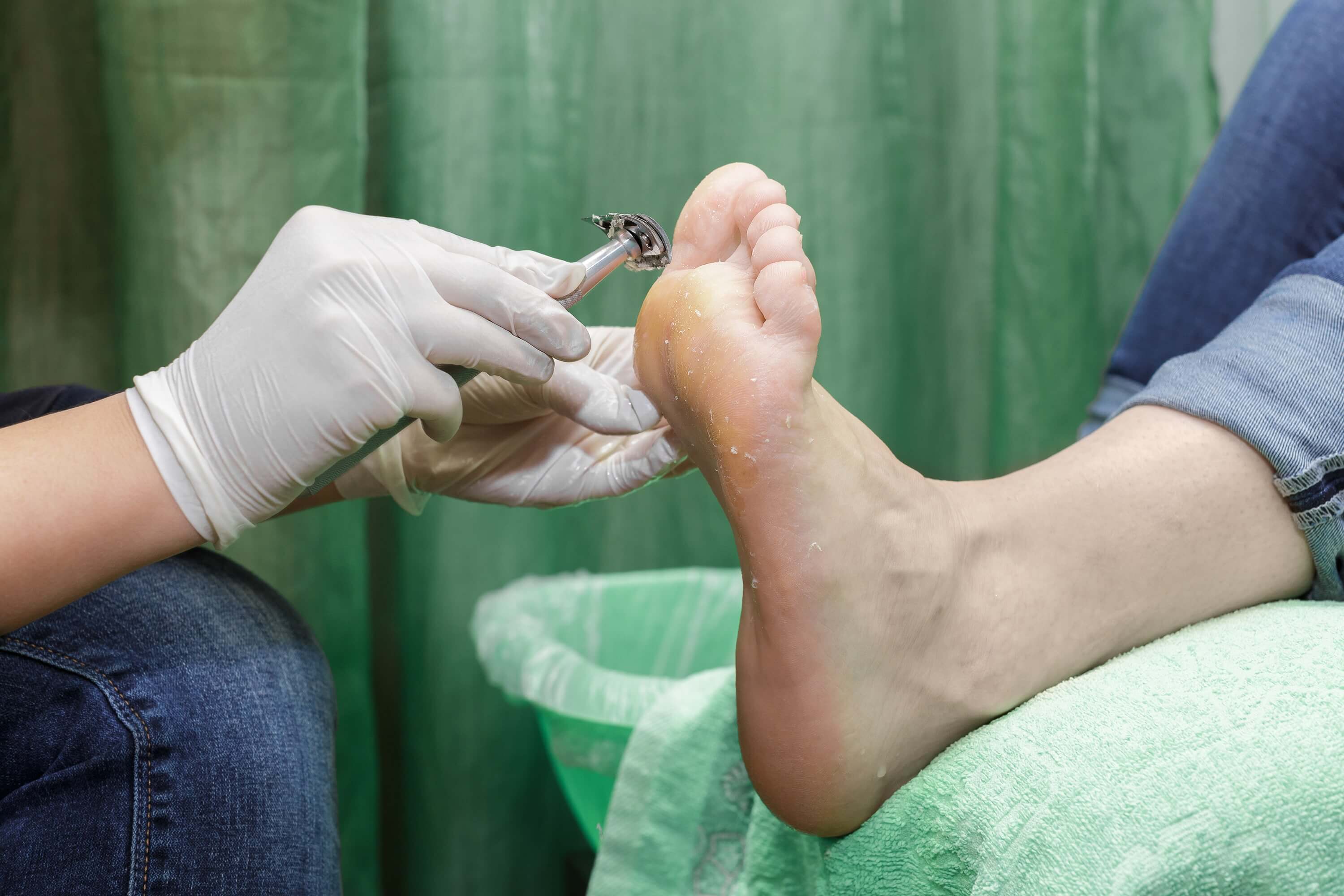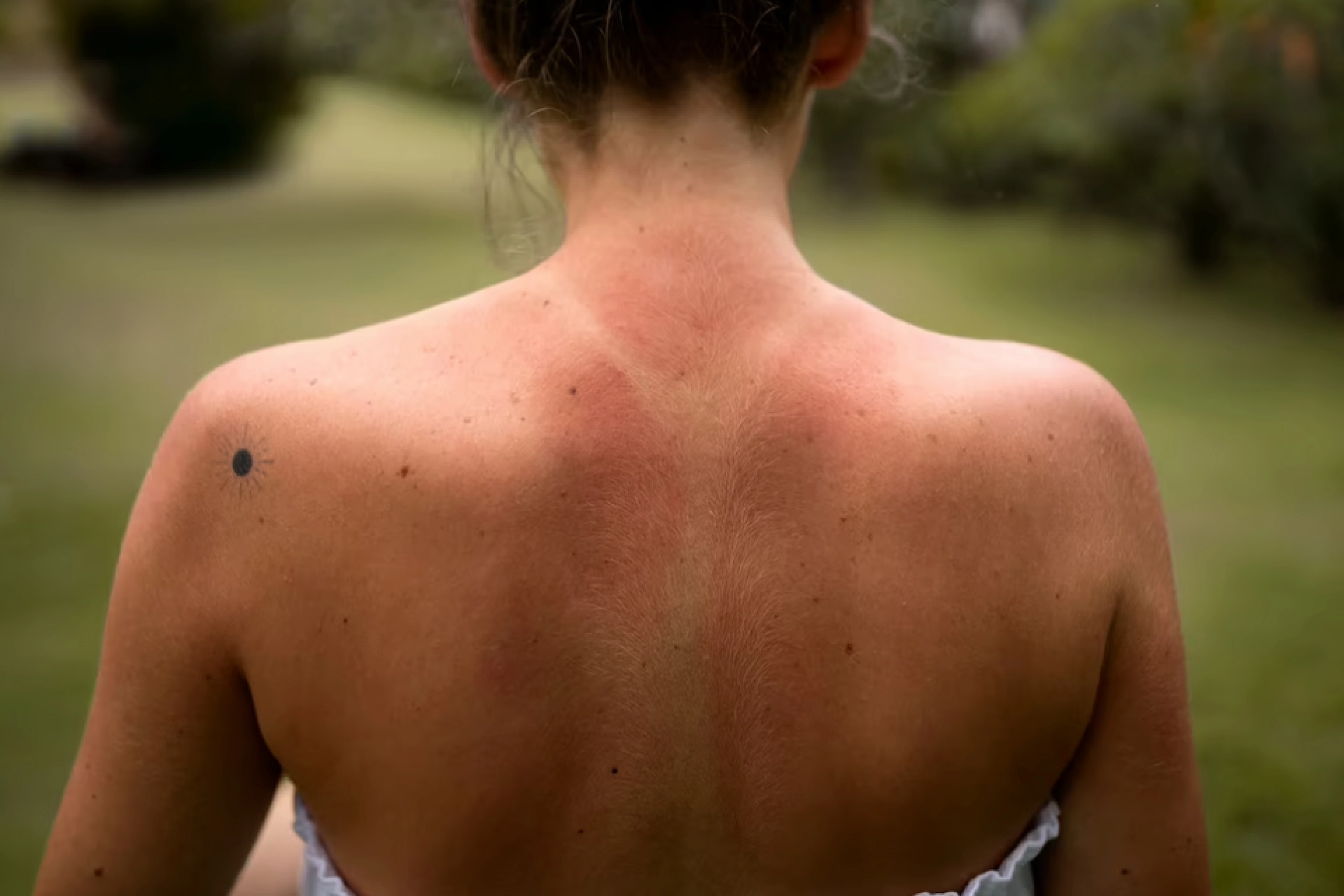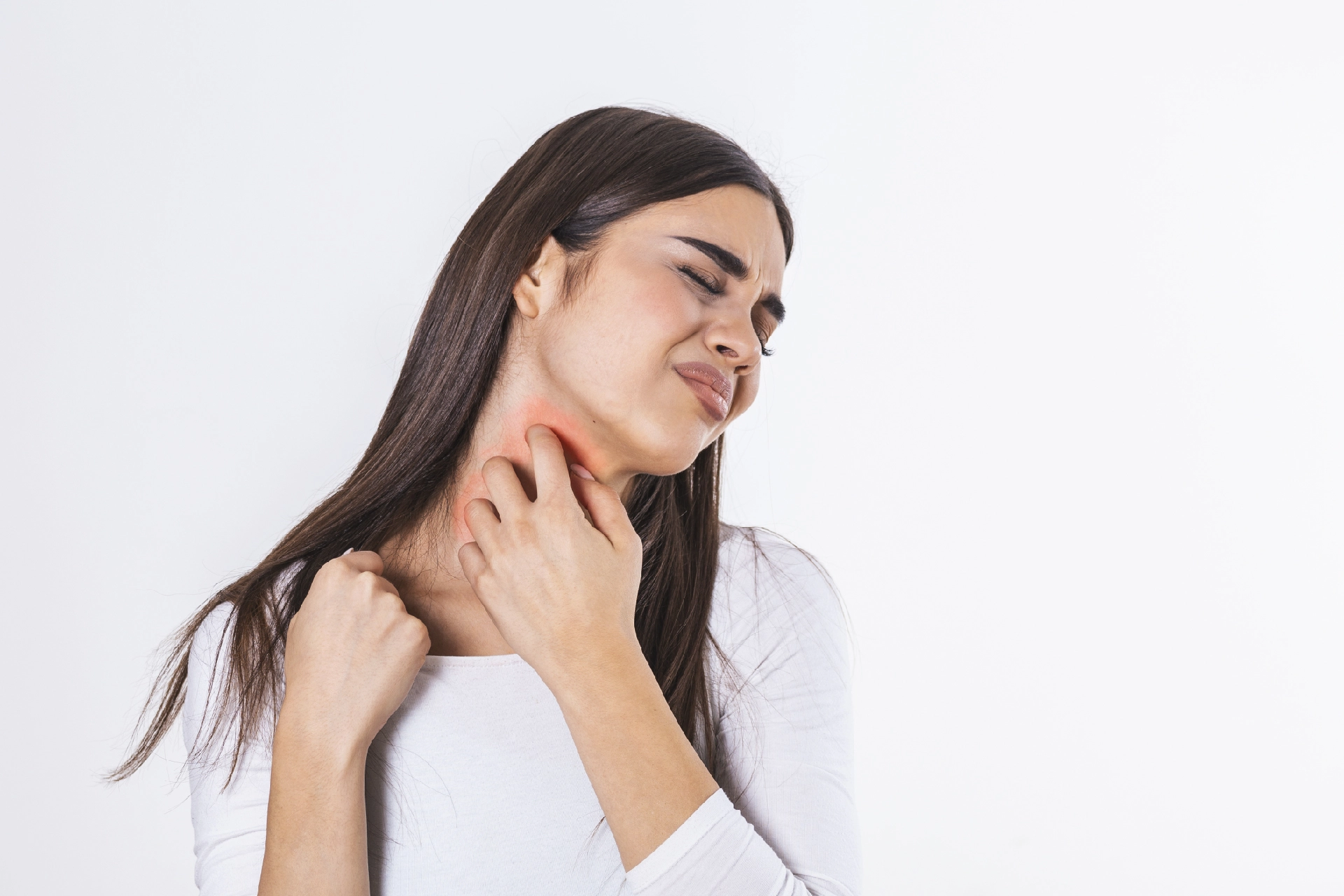Prosthodontics | 9 min read
How to Treat Corns on Feet: Home and Medical Remedies
Medically reviewed by
Table of Content
Key Takeaways
- Corns are not dangerous, they are the body's demands to friction and pressure.
- Use a pumice stone, which is a porous piece of volcanic rock, to file layers of dead skin.
- You should see a doctor when the corn becomes large in size, painful or sensitive.
Corns are thick, hardened areas of skin that generally show up as bumps on the feet and in between the toes. Corns are not dangerous and, in fact, are your body’s response to pressure and friction. Although corns are very common, they can cause irritation and may be sensitive and painful too. So, when you experience corn on the foot, rather than ignore it, it is best to pursue corn treatment.
Luckily, corns aren’t just generally self-diagnosable, they are usually self-treatable too. A pumice stone, warm water, and corn pads may just do the trick for you. Since corns arise due to pressure and friction, alongside home remedies, efforts to prevent corns on feet may be the way to put your best foot forward.
Here is what you need to know about foot corn treatment and its causes.
What is Foot Corn?
In scientific terminology, corn goes by the name heloma. Corns are thickened layers of skin that generally develop on the feet. However, corn is different from a callus. A callus is more diffused, while corn on the foot has a more defined area and is generally harder and more painful too.
Causes of Foot Corn
One of the main causes of corn is the increased friction exerted on your feet due to different activities. When you avoid wearing shoes with socks, it can cause pressure on your feet that may lead to corn formation. Another common reason for corns is wearing footwear that is too loose or too tight. This can cause friction on your foot and form corns. Prolonged standing or walking can also develop corns. Additionally, a shoe or sandal that doesn't fit your foot right or has some construction issues can also lead to corns.
You’ll be shocked to learn certain physical activities may also form corns. For example, if your walking posture is incorrect, you have a high risk of developing corns. However, you can get quick relief with foot corn removal. So, make sure to undergo a corn treatment without delay when you notice it.
Foot Corn Types
| Hard corns |
|
| Soft corns |
|
| Seed corns |
|
Corns on Feet Appear in Areas Such As:
- The tips, tops, and sides of toes
- In between the toes
- On the bottom of the foot
- Under toenails
In short, corn in the leg can appear wherever there is pressure and friction. For this reason, corns are commonly found in athletes and women who wear footwear with unequal pressure points.
Home Remedies For Foot Corn
While you can meet a doctor for foot corn treatment, here are some easy home remedies for corn on foot. When foot corn removal is possible at home, you can avoid meeting the doctor. However, if you feel home remedies for corn on foot are ineffective, it is better to consult a physician without delay. Check out these easy-to-follow foot corn removal techniques at home.
1. Eliminate Dead Cells From Your Feet By Using a Pumice Stone
As you already know, dead cells accumulate and form a thick shield on your foot due to corns. Rubbing these areas with a pumice stone helps eliminate dead cells and remove the corn. As pumice is made of a rough mineral, rubbing it on the affected corn can remove the corn and make your feet feel softer. However, this remedy is most effective when you use it during or after a shower, as the wetness helps with painless scrubbing.
2. Use Lemon Juice For Foot Corn Removal
Your corn may cause pain due to increased pressure on the affected area. It is the central region of the corn that causes pain. Lemon is one of the most effective remedies for treating corns as it is packed with antioxidants. When you rub the affected area with lime juice, the antioxidants present in lemon help reduce inflammation. Continuous application of lemon juice on the corn dries it out. Eventually, the hard portion of the corn falls out after it gets dried.
3. Apply Garlic on Corns For Faster Healing
As garlic is rich in antioxidants, it is one of the most commonly used remedies for skin ailments. If you want to use garlic for corn treatment, all you need to do is grind 3-4 cloves of garlic and apply this mixture to the corn. This helps in the quick healing of corn as garlic eliminates corn from its roots. Keep the garlic paste on the corn overnight and wash it the next day with warm water. No wonder garlic is the most sought-after home remedy as it helps fight bacterial and fungal infections!
4. Get Rid of Corns With Castor Oil
Before applying castor oil, place a small corn pad on the corn. You can buy these with ease from a pharmacy. Add some drops of castor oil to a cotton swab and use it on the corn. Ensure that you cover the corn with adhesive tape. If you find castor oil leaking from the corn pad, wear old socks. By applying castor oil daily, the corn gets hardened and can be peeled off with ease by using a pumice stone.
5. Soften The Hard Skin on The Corn By Applying Vitamin E Oil
When you use vitamin E oil on the corn regularly, it softens the thick areas of corn. Apply oil to the corn and leave it overnight. Wear a pair of socks, so the oil stays on the affected area. Since vitamin E contains antioxidants, it helps the corn to heal quickly. Continue this vitamin E oil application until your corn is eliminated.
6. Use Baking Soda For Foot Corn Treatment
Baking soda helps scrub dead cells due to its exfoliating properties. In addition, baking soda reduces the risk of infections as it naturally acts against fungus and bacteria. Add baking soda to warm water and soak your feet in this solution for 15 minutes. This technique softens the corn, and you can remove dead cells using a pumice stone. This is the easiest foot corn removal technique, so make sure to try it yourself.
7. Place a Pineapple Peel Slice on The Corn
You’ll be amazed to know that pineapple peels have medicinal properties that help remove corns. All you need to do is cut a portion of a pineapple peel and put it on your corn. Then, tie a bandage around and leave it overnight. Make sure to dab some coconut oil on the corn after you remove the pineapple peel. Practicing this technique regularly can help eliminate corns.
8. Apply Onion Juice to Remove Corns
Packed with vital acids and nutrients, onions are one of the most effective corn treatment techniques. Applying onion juice to the corn helps soften the thick center portion of the corn. The softening of hard skin enables you to get rid of dead cells. Apply the juice and place a cloth on the affected area for two days. The hard portion falls off after it gets dried.
How To Prevent Corns On Your Feet
Corns are not a form of skin disease. They are just the way your skin reacts to pressure and friction over a period of time. Hence tactics like avoiding high-heeled shoes or wearing socks work aim at reducing the source of friction. Here are the tips:
Wear Shoes That Fit Well
Finding shoes that do not cause friction against your skin is a way to avoid corns. Pick something that isn’t too loose or tight. Experts suggest that one way to buy the right shoes is to shop for them in person at the end of the day, when your feet may be more swollen.
Cut Your Toenails
Long toenails can cause pressure between your toes and your shoes, eventually leading to corns.
Use Socks And Padding
Socks, corn pads, bandages, and in-soles work towards reducing pressure and friction. So, you can use them to prevent corns.
Regular Cleansing
Regular cleansing and scrubbing can reduce the build-up of dead skin cells and hence, the formation of corns. Soap, water, a scrub brush, and a moisturiser to reduce friction will work well.
DIY Corn Treatment Techniques
Here are some home remedies for corn on foot you can try.
Slough Away With a Pumice Stone
The preliminary step here is to soak the corn in warm water for 10-15 minutes. This is so that the skin softens. Then, use a pumice stone, which is a porous piece of volcanic rock, to file layers of dead skin. In case the corn is in between the toes, you can use a nail file or emery board instead. You can repeat this process for a few weeks until the corn disappears. However, be on guard against over-filling, which can cause irritation, bleeding, and infection.
Soften The Skin With Salicylic Acid
You can purchase OTC products like lotions and moisturisers that contain salicylic acid to treat corns. These products can be applied to corn directly. The salicylic acid in these creams helps break down the skin cells of the corn. You can even consider corn pads containing salicylic acid. The salicylic acid makes the skin easier to scrape and, once again, you can use a pumice stone for the purpose. Your corn may disappear within 14 days. Keep in mind that the use of salicylic acid, however, can harm healthy areas of the foot and cause irritation and burning. Hence, you should take this route under the advice of a doctor.
Foot Corn Removal With a Doctor
Experts recommend that cutting or shaving of corn be reserved for doctors only. This is because you risk developing an infection, should the corn cutting go wrong. Doctors may use a scalpel to remove dead skin or may even apply a laser to treat the corn. Surgical treatment of corns is possible and may be necessary in case corn is pressing against a nerve or if the corns are arising due to a problem of bone structure.
During your visit to the doctor, you may discuss normal methods like scraping, padding, and shoe inserts to remove or reduce corns. Your doctor will also recommend whether you can use products containing salicylic acid, urea, hydrocolloid, and silver nitrate.
Should You See a Doctor For Corn on Foot?
You should see a doctor when the corn becomes large in size, painful, sensitive or when regular home remedies for corn on foot do not work. Pus formation is another sign that you need to see the doctor. Keep in mind that diseases like diabetes and peripheral arterial disease can cause foot problems and so, if there is any circulatory issue you are dealing with, it is best to contact a doctor before you set out on adopting home remedies for corns on feet. You should take a similar approach if you have fragile skin.
Conclusion
With a doctor on your side, corn treatment shouldn’t usually pose a hassle and your corns should disappear in time. Involving a doctor in your decisions becomes easy when you have the best healthcare platform provided by Bajaj Finserv Health. It lets you search for relevant doctors in your vicinity, book appointments online, consult via video, store your health records digitally, keep track of your medication and so much more. Prioritise your health and start a healthy lifestyle.
References
Disclaimer
Please note that this article is solely meant for informational purposes and Bajaj Finserv Health Limited (“BFHL”) does not shoulder any responsibility of the views/advice/information expressed/given by the writer/reviewer/originator. This article should not be considered as a substitute for any medical advice, diagnosis or treatment. Always consult with your trusted physician/qualified healthcare professional to evaluate your medical condition. The above article has been reviewed by a qualified doctor and BFHL is not responsible for any damages for any information or services provided by any third party.





